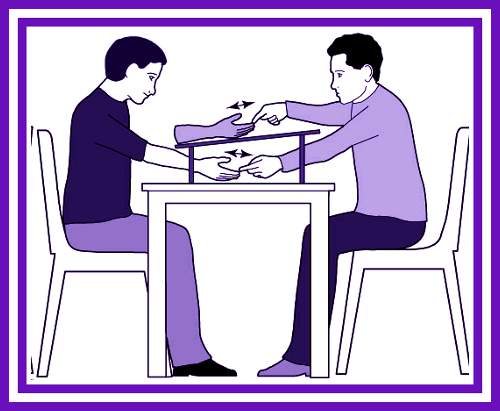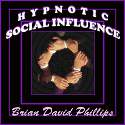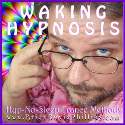RM had his first out-of-body experience at the age of 16. Now, at the age of 55, he has had more than he can count. They usually happen just before he falls asleep; for ten minutes, he feels like he is floating above his body, looking down on himself. If the same thing happens when he’s awake, it’s a far less tranquil story. The sense of displacement is stronger – his real body feels like a marionette, while he feels like a puppeteer. His feelings of elevation soon change into religious delusions, in which he imagines himself talking to angels and demons. Psychotic episodes follow. After four or five days, RM is hospitalized.
This has happened between 15 to 20 times, ever since RM was first diagnosed with schizophrenia at the age of 23. He hears voices, and he suffers from hallucinations and delusions. Despite these problems, he managed to hold down a job as a reporter until 2002 and more recently, he has been working in restaurants and volunteering as an archivist. Then, about a year ago, he took part in a study that seems to have changed his life.
For around a decade, RM has taken part in several studies designed by Sohee Park, a neuroscientist from Vanderbilt University who works on schizophrenia. “He’s a very interesting guy,” says Park. “He has very deep insight into his condition.”
Park’s student Katharine Thakkar was testing the idea that people experience psychotic experiences because they have a weak sense of self. It’s an idea that others have suggested before but it seems like something that would be hard to test with experiments. But not so: over the last decade, psychologists have shown that our sense of self is far from the fixed, permanent feeling that we assume it is. Instead, it is disarmingly pliable. You can tweak it. You can study it. Our brain continuously constructs our sense of self using information from our eyes, skin and joints. By tweaking that information using simple illusions, scientists have warped and displaced our sense of self in the lab.
The most famous of these – the rubber-hand illusion – debuted as a party trick at a Halloween bash. Princeton scientists stroked a rubber hand in time with someone’s real hand, which was hidden out of sight. A few seconds later, the volunteer genuinely felt that they owned the rubber hand. Since then, scientists like Henrik Ehrsson have taken the illusion to new extremes, convincing people that they have gained a third arm, jumped into a mannequin or left their own bodies. But the rubber hand illusion is still proving useful.
Thakkar performed the trick on 24 people with schizophrenia, including RM, and asked them to describe their experiences on a questionnaire. Their answers revealed that they experienced the illusion more strongly that 21 people of a similar age and background, but who didn’t have schizophrenia.
Not taking their word for it, Thakkar tested for other signs that people had bought into the illusion: a feeling that their fingers had moved, and a drop in the temperature of their real hand. She found both, and to a stronger extent in people with schizophrenia than in those without. The results suggest that schizophrenia is accompanied by a weaker or more flexible sense of body ownership than usual. Indeed, Thakkar found that people who experienced the most severe hallucinations (and some delusions) also felt the rubber-hand illusion most strongly.
But even among the group with schizophrenia, RM stuck out. The synchronous stroking didn’t just convince him that he had a rubber hand – it brought about one of his full-on out-of-body experiences. He felt that he and Thakkar were both levitating a foot off the floor: back to the ceiling, turning in a circle, and watching themselves on their chairs. The effect lasted for a few minutes, before they landed again. Others have duplicated this effect in the lab, but with more complicated set-ups involving cameras and virtual reality headsets. The rubber hand illusion shouldn’t do anything quite that dramatic.
RM was worried that a psychotic episode was on the horizon, but Park’s team had no idea about his history and he didn’t mention it. “We were so excited when it happened the first time, and he’s very helpful,” says Park. When they asked him to come back and repeat the experiment, he agreed. He wanted to know more too.
When he returned, Thakkar duplicated the same experience and this time, RM actually found the experience to be quite pleasant and wanted the feeling to come back. That was when he told the scientists about his history. “We got really worried, because we’d just induced these twice!” recalls Park. But she didn’t need to worry.
After the experiment, RM wanted to know more, so Thakkar plied him with information and journal articles about out-of-body experiences. He learned that the phenomenon had a name. He learned that scientists could willingly duplicate the effect in a lab. He learned that they had identified parts of the brain that are associated with the experiences. The information was revelatory. “He gained a psychological cause for this apparently supernatural phenomenon,” says Park, “and he has used this knowledge to control his symptoms.” Since then, RM hasn’t had a psychotic episode.
This approach almost certainly won’t work for everyone – bear in mind that RM is high-functioning and self-aware. He is very eloquent and has an IQ of 120. Park notes that similar explanations might also help other people with unusual experiences like out-of-body effects, since these could exacerbate the other symptoms of schizophrenia. “If it feels supernatural, that just feeds into the delusions,” she says.
The study has broader implications for helping people with schizophrenia. Activities that promote a stronger sense of body awareness, such as yoga, dance or playing a musical instrument, might help to alleviate some of the symptoms of schizophrenia.
But for RM, it seems that learning more about his condition was enough. A year on, his diagnosis is unchanged, he still gets out-of-body experiences, and he still hears voices. But gone are the days when his experiences would require a stay in a hospital. He is now hoping to establish himself as a freelance writer, and he’s even had a paper on religion accepted in a peer-reviewed academic journal. For him, knowledge has proven to be a potent treatment. “We check up with him regularly and he’s been doing really well,“ says Park.
Reference: Thakkar, Nichols, McIntosh & Park. 2011. Disturbances in body ownership in schizophrenia: evidence from the rubber hand illusion and case study of a spontaneous out-of-body experience.
See original article at Man with schizophrenia has out-of-body experience in lab, gains knowledge, controls his psychosis.
This material is based upon just one of many forms that social psychology or social influence can take. Once we understand the principles behind influence of this type, we can begin to apply those principles in a variety of contexts. We become more effective at changing behaviors and in creating desirable outcomes . . . socially, in business, and within any other context you can imagine.
This year, participants in the WALKABOUT TRANCE THREE will take this sort of knowledge and learn to put it to actual immediate and effective use by going out into the public and applying the principles in fun and engaging real world practicum experiments with members of the public as we explore walkabout style waking street hypnosis and social influence and more. Participants will not only be learning cutting edge techniques in delivering weaking hypnotic suggestions to members of the public, they will learn the core principles and more of authentic social influence with practical exercises out and about walkabout trance style to engage and influence members of the public that develop their skills and take their ability to effectively influence others to the next level and beyond.
Learn the theory . . . learn the talk . . . and . . . most importantly . . . learn to walk the walk and become the sort of influential person you wish to be!
Want to learn how to engage complete strangers and influence them through the principles of social influence, waking suggestion, power communication and more in a new and improved powerful form of Walkabout Trance that combines the positive qualities of walkabout trance style street hypnosis with social influence and eyes open waking hypnosis and so very much more and beyond?
http://www.walkabouttrance.com
Join us for WALKABOUT TRANCE THREE in February in Los Angeles as part of the Beach Resort Getaway weekend of hypnotic experiences . . . see http://www.walkabouttrance.com for more information (sign up now and receive the very special early bird discount). This time around, we’re going way beyond what others have been doing as simple street hypnosis as we explore the use of Eyes Open Waking Hypnosis combined with some amazing Social Influence and Power Communication material that will take your skills to the next level. Seriously, this is both an incredibly powerful course experience with both theory and immediate practical application out and about on the boardwalk of a beach resort as well as an incredible Hypnoparty that takes you well beyond the next level in a meaningful yet fun way. Seriously, do NOT miss your chance.
The instructor of the weekend, Brian David Phillips (that’s me), is a highly regarded hypnotist within the worldwide hypnosis community as well as an associate professor at an elite university in Asia. He has actively taught performance presentation, communication, critical theory, and influence for decades at the undergraduate through doctoral levels. Likewise, he has had a lifelong love of hypnosis and has taught cutting edge hypnosis courses in countries throughout the globe.
You can also check out the products below to improve your skillsets related to speed hypnosis and eyes open waking hypnosis.
Brian
www.BrianDavidPhillips.net









